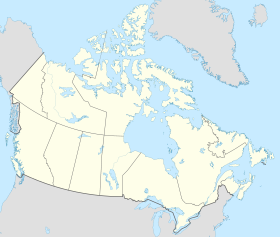Politics of Canada
The politics of Canada function within a framework of parliamentary democracy and a federal system of parliamentary government with strong democratic traditions.[1] Canada is a constitutional monarchy, in which the monarch is head of state. In practice, the executive powers are directed by the Cabinet, a committee of ministers of the Crown responsible to the elected House of Commons of Canada and chosen and headed by the Prime Minister of Canada.[2]
Canada is described as a "full democracy",[3] with a tradition of liberalism,[4] and an egalitarian,[5] moderate political ideology.[6][7][8] Far-left and far-right politics has never been prominent in Canadian politics.[9][10][11][12] The traditional "brokerage" model of Canadian politics leaves little room for ideology.[a][13] Peace, order, and good government, alongside an Implied Bill of Rights are founding principles of the Canadian government.[14][15] An emphasis on social justice has been a distinguishing element of Canada's political culture.[16][17][18] Canada has placed emphasis on equality and inclusiveness for all its people.[19][20]
The country has a multi-party system in which many of its legislative practices derive from the unwritten conventions of and precedents set by the Westminster parliament of the United Kingdom. The two dominant political parties in Canada have historically been the current Liberal Party of Canada and the Conservative Party of Canada (as well as its numerous predecessors).[21] Parties like the New Democratic Party, the Quebec nationalist Bloc Québécois and the Green Party of Canada have grown in prominence, exerting their own influence to the political process.[21]
Canada has evolved variations: party discipline in Canada is stronger than in the United Kingdom, and more parliamentary votes are considered motions of confidence, which tends to diminish the role of non-Cabinet members of parliament (MPs). Such members, in the government caucus, and junior or lower-profile members of opposition caucuses, are known as backbenchers. Backbenchers can, however, exert their influence by sitting in parliamentary committees, like the Public Accounts Committee or the National Defence Committee.
Canada's governmental structure was originally established by the British Parliament through the British North America Act, 1867 (now the Constitution Act, 1867),[22] but the federal model and division of powers were devised by Canadian politicians. Particularly after World War I, citizens of the self-governing Dominions, such as Canada, began to develop a strong sense of identity, and, in the Balfour Declaration of 1926, the British government and the governments of the six Dominions jointly agreed that the Dominions had full autonomy within the British Commonwealth.
In 1931, after further consultations and agreements between the British government and the governments of the Dominions, the British Parliament passed the Statute of Westminster, giving legal recognition to the autonomy of Canada and other Dominions. However, Canadian politicians were unable to obtain consensus on a process for amending the constitution, which was therefore not affected by the Statute of Westminster, meaning amendments to Canada's constitution continued to require the approval of the British parliament until that date. Similarly, the Judicial Committee of the Privy Council in Britain continued to make the final decision on criminal appeals until 1933 and on civil appeals until 1949.[23] It was not until 1982, with the Patriationof the Constitution, that the role of the British Parliament was ended.
